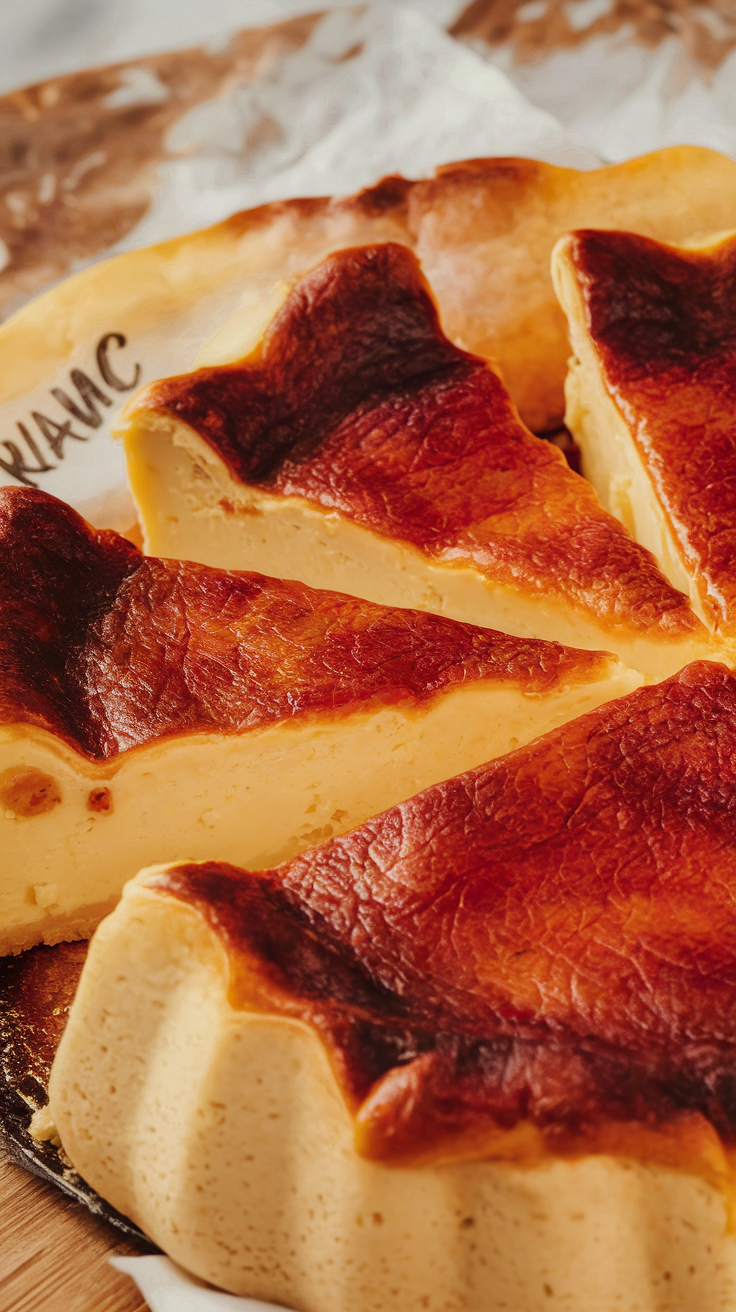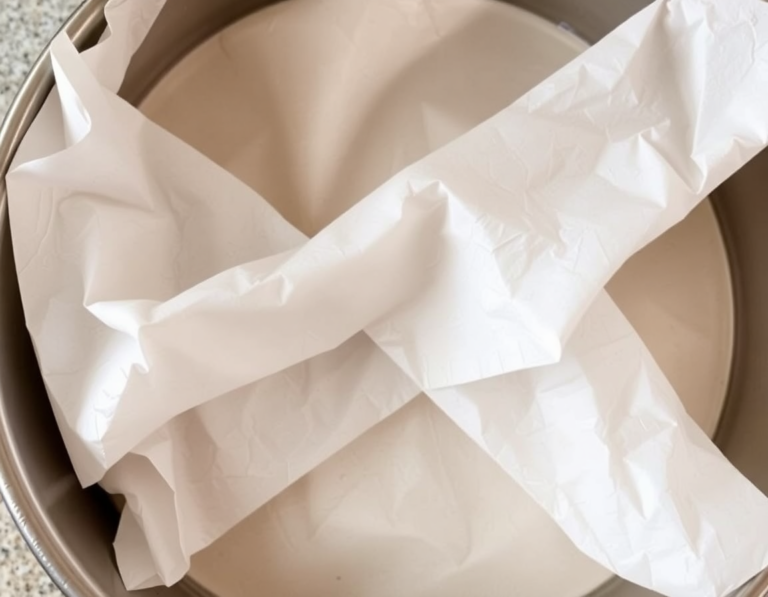Ever since I stumbled upon the magic of Basque cheesecake, my dessert world hasn’t been the same. With its irresistibly creamy center and perfectly scorched top, it’s like a culinary paradox—both rustic and refined. If you haven’t tried it yet, well, it’s like missing out on the Taylor Swift concert of the cheesecake universe!
Steps
- Set your oven rack in the center and preheat the oven to 500°F.
- Prepare the pan by taking two sheets of parchment paper, crumpling each into a ball, and then flattening them out. Overlap these sheets in a cross pattern in a 9″ springform pan, ensuring the bottom and sides are covered.
- Fold the excess parchment over the pan’s edge to keep the top of the cake exposed to the oven’s heat.
- Combine all ingredients in a food processor with a blade attachment, ideally with an 11-cup capacity. Process until smooth and lump-free, scraping the bowl halfway through, for about 5 minutes.
- Pour the batter into the prepared pan and place it on the oven’s middle rack.
- Bake for 25 to 30 minutes until the top is dark brown, the edges are set, and the center is jiggly. Use a thermometer to check for a reading of just under 185°F at the edge. Start checking the cheesecake at 25 minutes, and monitor closely until done.
- Once baked, let the cheesecake cool in the pan on a rack to room temperature before slicing. Serve at room temperature or refrigerate and serve chilled.
- Store any leftover cheesecake in the refrigerator for up to a week.
Ingredients
- 2 pounds (approximately 900g) of cream cheese, softened
- 1 1/2 cups (300g) of granulated sugar
- 6 large eggs
- 2 cups (480ml) of heavy cream
- 1/4 cup (30g) of all-purpose flour
- 1/2 teaspoon of salt
- 1 teaspoon of vanilla extract
FAQ
- What makes Basque cheesecake different from traditional cheesecakes?
- Basque cheesecake is unique primarily due to its crustless nature and its deliberately burnt, dark top. Unlike traditional cheesecakes, it doesn’t require a water bath or an extended baking time, making it easier to prepare. Its texture is creamy and smooth, offering a tangy flavor that’s distinct from regular cheesecakes.
- Why does Basque cheesecake have a burnt top?
- The burnt top is intentional and contributes to the cake’s characteristic flavor and appearance. The high oven temperature caramelizes the top layer, creating a unique taste profile and a visually striking contrast with the creamy interior.
- Can I make Basque cheesecake without a food processor?
- Yes, you can make Basque cheesecake without a food processor. Use a stand mixer to combine the ingredients on low speed, ensuring to scrape down the bowl periodically. Alternatively, an immersion blender or a regular blender can be used to achieve a smooth, lump-free batter.
- How should I store leftover Basque cheesecake?
- Leftover Basque cheesecake should be stored in the refrigerator, where it will remain fresh for up to a week. It can be served either chilled or at room temperature, depending on your preference.
- What should I do if my parchment paper starts to burn?
- Since most parchment papers have a maximum temperature limit below 500°F, monitor it closely when baking at higher temperatures. To minimize burning, trim excess parchment before baking, and keep an eye on the exposed edges, especially if positioned on an upper oven rack.
Tips
- Avoid Lumps in Batter: If you don’t have a food processor, use a stand mixer to combine the ingredients on low speed, scraping the sides of the bowl as needed. Then, use an immersion blender or a regular blender in batches to ensure a smooth, lump-free batter.
- Master the Baking Time: Use a digital thermometer to check for perfect doneness. Insert it 1 inch from the edge and 1 inch down, aiming for 185°F. If you don’t have a thermometer, remember that the center should still jiggle slightly when you take it out of the oven.
- Monitor Parchment Paper: Most parchment papers can char at temperatures above 450°F. Keep an eye on it, especially if using an upper rack, and consider trimming excess parchment to prevent burning during baking.
Equipment
- 9″ Springform Pan – Essential for making cheesecakes as it allows for easy removal of the cake.
- Food Processor (11-cup capacity) – Used to mix the batter until smooth and lump-free. If you don’t have one, a stand mixer with an immersion blender or a regular blender could be alternatives.
- Digital Thermometer – Useful for checking the doneness of the cheesecake by measuring the internal temperature.

